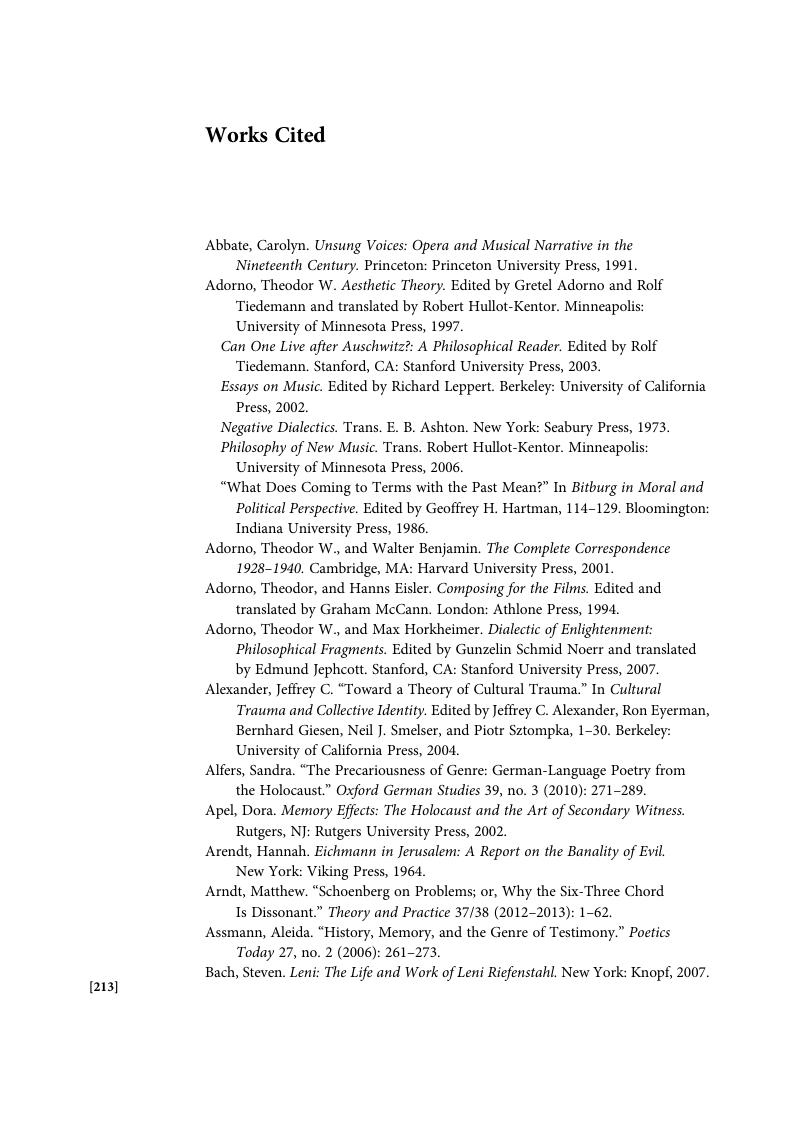Book contents
- Musical Witness and Holocaust Representation
- Music Since 1900
- Musical Witness and Holocaust Representation
- Copyright page
- Dedication
- Contents
- Music Examples
- Tables
- Book part
- Glossary
- Introduction
- 1 The composer as witness: Arnold Schoenberg's A Survivor from Warsaw
- 2 The philosopher as witness: Theodor Adorno's A Survivor from Warsaw
- 3 The composer as witness: Hanns Eisler's Film Score to Nuit et Brouillard
- 4 The state as witness: Jüdische Chronik in the German Democratic Republic
- 5 The composer as witness: Steve Reich's Different Trains
- Epilogue
- Notes
- Works Cited
- Index
- References
Works Cited
Published online by Cambridge University Press: 05 August 2015
- Musical Witness and Holocaust Representation
- Music Since 1900
- Musical Witness and Holocaust Representation
- Copyright page
- Dedication
- Contents
- Music Examples
- Tables
- Book part
- Glossary
- Introduction
- 1 The composer as witness: Arnold Schoenberg's A Survivor from Warsaw
- 2 The philosopher as witness: Theodor Adorno's A Survivor from Warsaw
- 3 The composer as witness: Hanns Eisler's Film Score to Nuit et Brouillard
- 4 The state as witness: Jüdische Chronik in the German Democratic Republic
- 5 The composer as witness: Steve Reich's Different Trains
- Epilogue
- Notes
- Works Cited
- Index
- References
Summary

- Type
- Chapter
- Information
- Musical Witness and Holocaust Representation , pp. 213 - 229Publisher: Cambridge University PressPrint publication year: 2015



